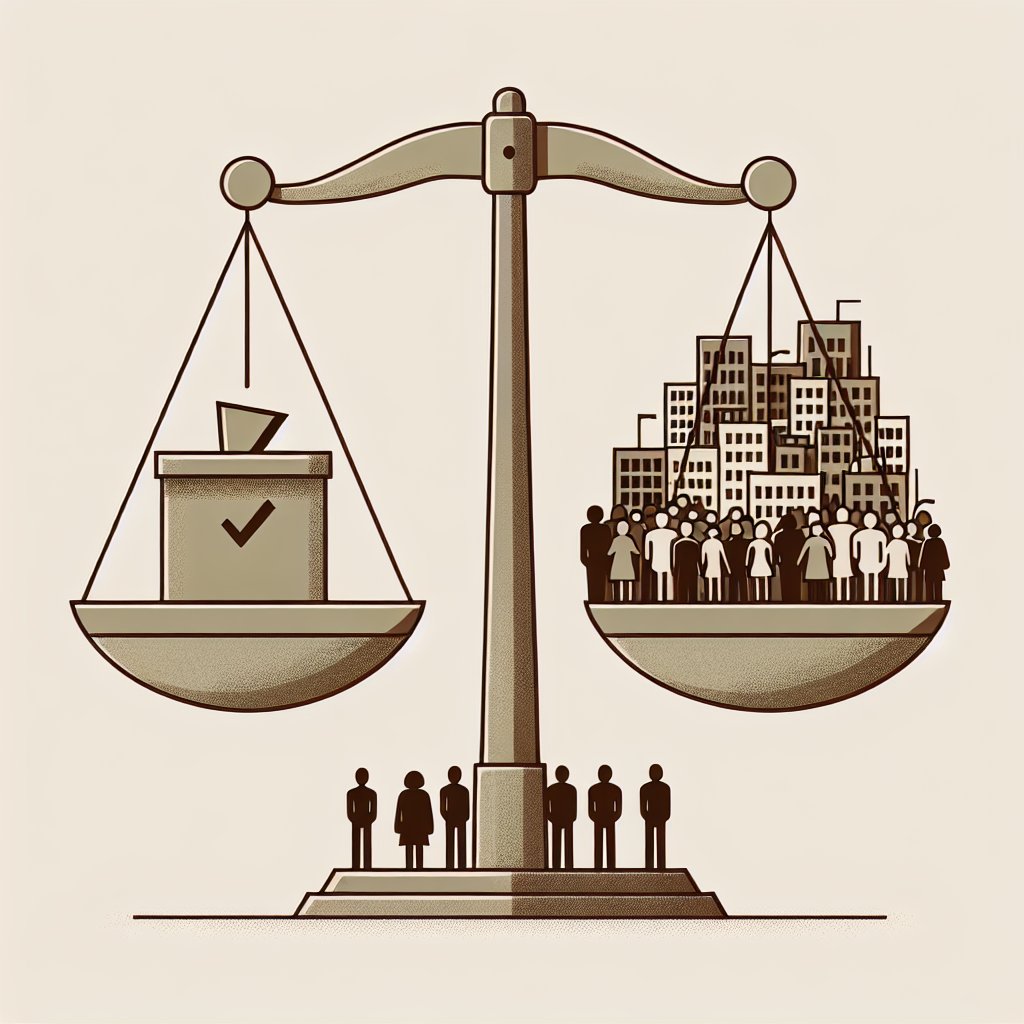Analyzing the Impact of Voter Turnout on Elections
Voter turnout is a vital component of any electoral process, acting as a barometer for the health of democracy. Understanding the impact of voter turnout on elections offers insights into the political landscape and the engagement levels of citizens. As we navigate through the post-2024 election landscape, the importance of analyzing voter turnout remains critical for predicting future electoral outcomes.
In this article, we will take a comprehensive look at the multifaceted impact of voter turnout on elections, exploring historical trends, social influences, and the implications for future electoral processes.
The Role of Voter Turnout in Election Results
Voter turnout serves as a significant determinant of election outcomes, shaping not only who wins or loses but also the legitimacy of the electoral process itself. In the 2024 U.S. presidential election, for instance, various demographics either engaged or disengaged, significantly influencing the final results. Higher turnout among young voters and marginalized communities, often reflects an increased interest in social issues and a desire for representation, which can sway outcomes in favor of progressive candidates.
Moreover, the relationship between voter turnout and election results is not a unidimensional one. It’s influenced by multiple factors such as socioeconomic status, education levels, and even weather conditions on voting day. For example, rain can deter voters in certain regions, leading to disproportionately low turnout that can affect results. Therefore, analyzing voter turnout allows us to predict which demographics are likely to show up and how their participation may shift the political landscape.
Historical Trends in Voter Turnout
Looking at historical data, it’s evident that voter turnout has fluctuated significantly over the years. In the early 20th century, voter turnout in the U.S. presidential elections was consistently above 70%. However, post-1960, the trend saw a marked decline, with the turnout rate dipping to lows of around 50% in some elections. Understanding these historical trends provides context for the recent uptick in voter participation, especially noted in the high-stakes elections of 2020 and 2024, when turnout surged past 66%.
Historical patterns also demonstrate the impact of major events on voter turnout. During moments of national crises, such as the Civil Rights Movement or the post-9/11 period, enthusiasm for voting can experience significant boosts. Analyzing these historical dynamics highlights the importance of social movements and collective mobilization in shaping voter engagement and turnout.
Factors Influencing Voter Turnout in 2025
In 2025, several contemporary factors are influencing voter turnout, including technological advancements and changing social dynamics. The rise of social media and mobile technology has made political engagement more accessible than ever. Platforms like TikTok and Twitter are not just spaces for social interaction but also for disseminating political messages and mobilizing voters. Reports show that candidates and organizations leveraging digital platforms experienced higher engagement rates, which translated into increased participation during the recent elections.
Additionally, legislative changes aimed at increasing voter access also play a crucial role in influencing turnout. In 2024, many states implemented reforms such as mail-in voting, early voting, and same-day registration, which allowed more citizens to participate in the electoral process. By analyzing these changes, we see a direct correlation between voter accessibility and increased turnout, suggesting that ongoing legislative reforms could further enhance voter engagement in future elections.
The Consequences of Low Voter Turnout
Low voter turnout presents several challenges for democracy and governance. One of the most pressing consequences is the risk of underrepresentation. When only a small segment of the population votes, the elected officials may not reflect the demographics and priorities of the broader community. This can lead to policies that favor specific interests at the expense of marginalized groups, exacerbating existing inequalities.
Moreover, low participation rates can lead to political apathy and disengagement. When individuals perceive their votes as inconsequential, it can create a cycle of disillusionment with the political process, further decreasing future turnout. This erosion of trust in democratic institutions poses a significant challenge, as it can diminish the overall quality of governance and civic engagement across generations. Sustained efforts toward increasing turnout can help break this cycle, fostering a more vibrant democracy.
Strategies to Improve Voter Turnout
In efforts to address the issues of low voter turnout, various strategies have emerged that aim to engage citizens more effectively. Civic education programs that inform individuals about the voting process, the importance of their participation, and the impact of their vote can significantly improve turnout. Schools, communities, and organizations can play a role in fostering civic awareness from a young age, equipping future voters with the knowledge they need to make informed decisions.
Additionally, grassroots campaigns that focus on direct voter engagement can also enhance participation rates. Mobilizing communities through door-to-door canvassing, phone banking, and local events creates a personal connection that encourages individuals to vote. Such initiatives have shown significant success in engaging communities that typically have lower turnout rates, including youth, low-income, and first-time voters. Research indicates that voters are more likely to participate when they feel directly engaged and informed about the electoral process.
Moreover, leveraging data analytics can assist organizations in identifying and targeting potential voters. By analyzing demographic data and past voting behavior, campaigns can tailor their outreach efforts to specific populations, ensuring message effectiveness and increasing the likelihood of turnout. This strategic approach to voter engagement can significantly enhance the electoral landscape, creating a more representative democracy.
Conclusion
Analyzing the impact of voter turnout on elections reveals that it is not merely a statistic but a complex interplay of social dynamics, historical trends, and legislative practices. High voter turnout is indicative of a healthy democracy, one that reflects the will and needs of its constituents. On the flip side, low turnout raises concerns about representation, engagement, and the overall legitimacy of the election process.
As we move toward future elections, fostering voter participation will remain a vital focus for enhancing democratic engagement. By understanding the factors influencing turnout and implementing effective strategies to engage citizens, we can pave the way for a more representative and vibrant democracy.
FAQs
What is voter turnout?
Voter turnout refers to the percentage of eligible voters who participate in an election. It is a crucial metric used to gauge the level of civic engagement within a population.
Why is voter turnout important?
Voter turnout is essential because it directly impacts the results of elections and reflects citizen engagement, representation, and the overall health of a democracy.
How can organizations improve voter turnout?
Organizations can improve voter turnout through civic education, grassroots mobilization, leveraging technology, and using data analytics to target potential voters effectively.












